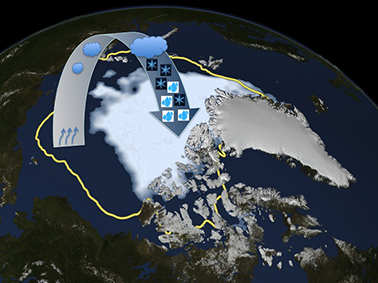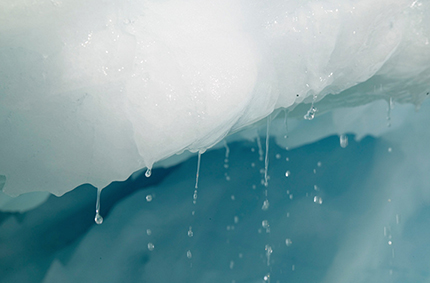Strong warming leads to increases in Arctic rainfall

The Arctic is known for its deep-freeze temperatures, especially in winter when temperatures can drop to -40 °C or lower. However, the Arctic is currently warming fast, about three times as fast as the global warming rate. Three years ago, researchers from KNMI concluded that Arctic warming and sea ice retreat will lead to enhanced precipitation, but the assumption then was that this would fall predominantly as snow owing to the low ambient Arctic temperatures.
Richard Bintanja, who works at the KNMI and since the 1st of March 2017 affiliated as honorary professor with the Energy and Sustainability Research Institute, ESRIG, at the University of Groningen and Olivier Andry have now determined that the additional precipitation will almost exclusively fall in the form of rain. In their Nature Climate Change article of 13 March 2017 “Towards a rain-dominated Arctic” they show that this feature is linked to the strong warming of the Arctic region, so that precipitation (which begins as snow) melts in the warm atmosphere and reaches the surface as rain.
Moreover, they show that Arctic precipitation, which currently is dominated by snowfall, will predominantly consist of rain near the end of the century. This will have far-reaching consequences, for instance with respect to melting of snow, glaciers, sea ice and permafrost (promoting the release of methane, a potentially strong greenhouse gas), for all kinds of ecosystems that depend on (seasonal) availability of fresh water, but also for humans by increasing sleet and the associated infrastructural problems.
For more information you can contact Richard Bintanja:
E-mail: bintanja@gmail.com
Telephone: +31 637565005

More news
-
15 September 2025
Successful visit to the UG by Rector of Institut Teknologi Bandung
